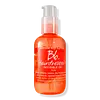What's inside
What's inside
 Key Ingredients
Key Ingredients

 Benefits
Benefits

 Concerns
Concerns

 Ingredients Side-by-side
Ingredients Side-by-side

Dimethicone
EmollientHydrogenated Ethylhexyl Olivate
EmollientIsododecane
EmollientDimethiconol
EmollientVitis Vinifera Seed Extract
AntimicrobialGardenia Taitensis Flower Extract
Skin ConditioningBis-Cetearyl Amodimethicone
Macadamia Ternifolia Seed Oil
EmollientHydrogenated Olive Oil Unsaponifiables
EmollientCocos Nucifera Oil
MaskingVitis Vinifera Seed Oil
EmollientPrunus Amygdalus Dulcis Oil
Skin ConditioningArgania Spinosa Kernel Oil
EmollientCarthamus Tinctorius Seed Oil
MaskingButyl Methoxydibenzoylmethane
UV AbsorberEthylhexyl Methoxycinnamate
UV AbsorberEthylhexyl Salicylate
UV AbsorberSqualane
EmollientTocopherol
AntioxidantLinalool
PerfumingButylphenyl Methylpropional
PerfumingHexyl Cinnamal
PerfumingLimonene
PerfumingParfum
MaskingDimethicone, Hydrogenated Ethylhexyl Olivate, Isododecane, Dimethiconol, Vitis Vinifera Seed Extract, Gardenia Taitensis Flower Extract, Bis-Cetearyl Amodimethicone, Macadamia Ternifolia Seed Oil, Hydrogenated Olive Oil Unsaponifiables, Cocos Nucifera Oil, Vitis Vinifera Seed Oil, Prunus Amygdalus Dulcis Oil, Argania Spinosa Kernel Oil, Carthamus Tinctorius Seed Oil, Butyl Methoxydibenzoylmethane, Ethylhexyl Methoxycinnamate, Ethylhexyl Salicylate, Squalane, Tocopherol, Linalool, Butylphenyl Methylpropional, Hexyl Cinnamal, Limonene, Parfum
Water
Skin ConditioningSodium Laureth Sulfate
CleansingCocamidopropyl Betaine
CleansingSodium Cocoyl Glutamate
CleansingDecyl Glucoside
CleansingButylene Glycol
HumectantParfum
MaskingCoco-Glucoside
CleansingGlyceryl Oleate
EmollientPolyquaternium-22
Sodium Benzoate
MaskingPEG-120 Methyl Glucose Dioleate
EmulsifyingSodium Chloride
MaskingCitric Acid
BufferingGlycerin
HumectantPiroctone Olamine
PreservativeCoconut Acid
CleansingHibiscus Sabdariffa Flower Extract
Skin ConditioningPhytosphingosine
Skin ConditioningAlcohol
AntimicrobialLeontopodium Alpinum Flower/Leaf Extract
Skin ConditioningAsiaticoside
AntioxidantPotassium Sorbate
PreservativeWater, Sodium Laureth Sulfate, Cocamidopropyl Betaine, Sodium Cocoyl Glutamate, Decyl Glucoside, Butylene Glycol, Parfum, Coco-Glucoside, Glyceryl Oleate, Polyquaternium-22, Sodium Benzoate, PEG-120 Methyl Glucose Dioleate, Sodium Chloride, Citric Acid, Glycerin, Piroctone Olamine, Coconut Acid, Hibiscus Sabdariffa Flower Extract, Phytosphingosine, Alcohol, Leontopodium Alpinum Flower/Leaf Extract, Asiaticoside, Potassium Sorbate
 Reviews
Reviews

Ingredients Explained
These ingredients are found in both products.
Ingredients higher up in an ingredient list are typically present in a larger amount.
Parfum is a catch-all term for an ingredient or more that is used to give a scent to products.
Also called "fragrance", this ingredient can be a blend of hundreds of chemicals or plant oils. This means every product with "fragrance" or "parfum" in the ingredients list is a different mixture.
For instance, Habanolide is a proprietary trade name for a specific aroma chemical. When used as a fragrance ingredient in cosmetics, most aroma chemicals fall under the broad labeling category of “FRAGRANCE” or “PARFUM” according to EU and US regulations.
The term 'parfum' or 'fragrance' is not regulated in many countries. In many cases, it is up to the brand to define this term.
For instance, many brands choose to label themselves as "fragrance-free" because they are not using synthetic fragrances. However, their products may still contain ingredients such as essential oils that are considered a fragrance by INCI standards.
One example is Calendula flower extract. Calendula is an essential oil that still imparts a scent or 'fragrance'.
Depending on the blend, the ingredients in the mixture can cause allergies and sensitivities on the skin. Some ingredients that are known EU allergens include linalool and citronellol.
Parfum can also be used to mask or cover an unpleasant scent.
The bottom line is: not all fragrances/parfum/ingredients are created equally. If you are worried about fragrances, we recommend taking a closer look at an ingredient. And of course, we always recommend speaking with a professional.
Learn more about Parfum